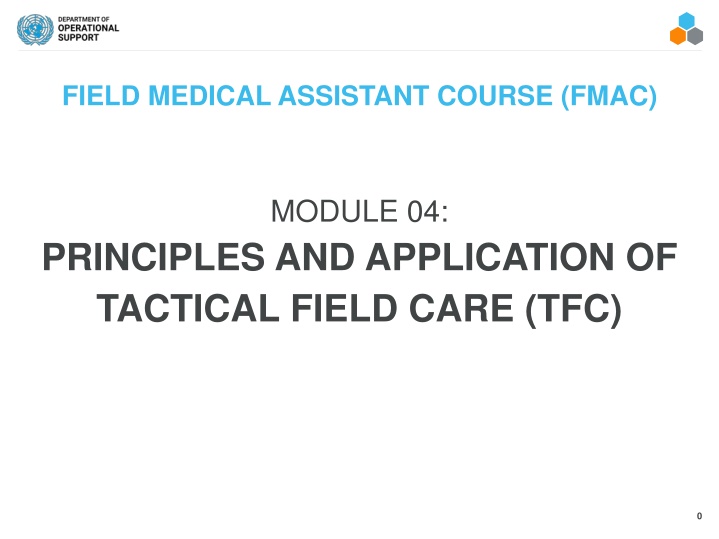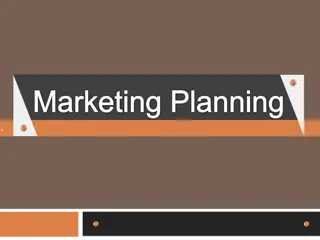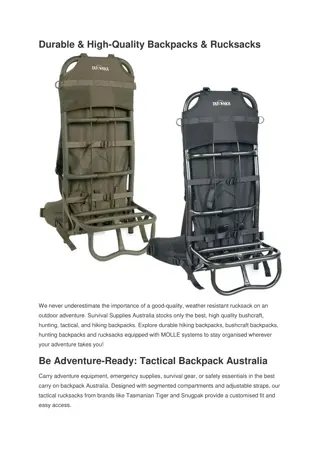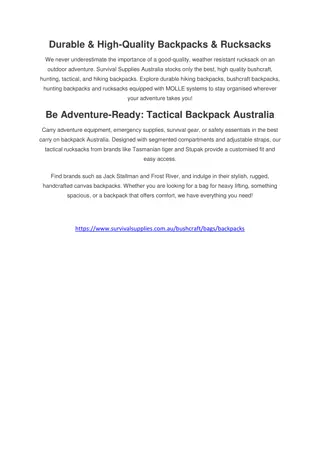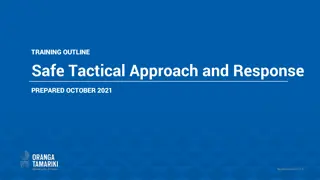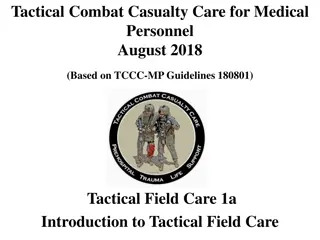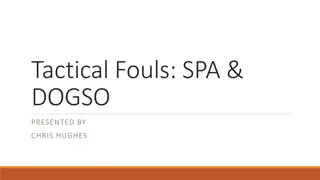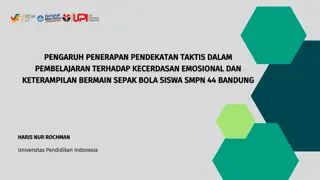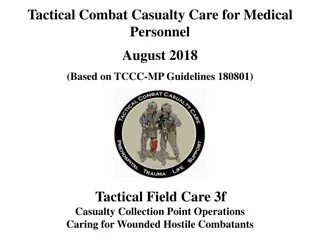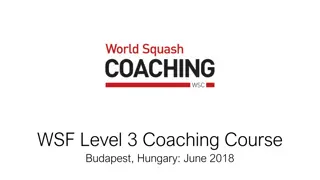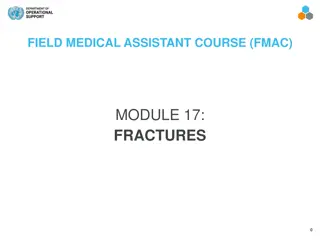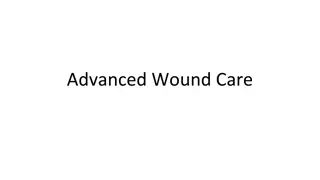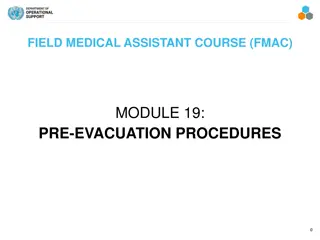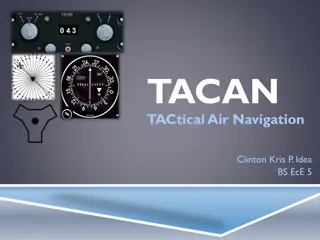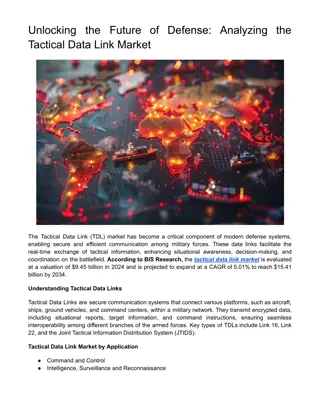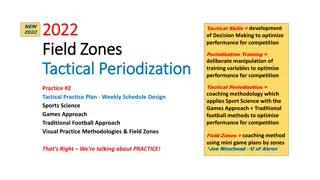Tactical Field Care Training Overview
This course module provides training in Tactical Field Care for medical and non-medical personnel in combat and peacekeeping scenarios. Students learn principles of casualty extraction, communication with tactical leadership, triage considerations, and phased care progression. The training covers three phases: Care Under Fire, Tactical Field Care, and Tactical Evacuation Care. Emphasis is placed on safety, quick decision-making, and management of life-threatening injuries. The importance of security and safety in Tactical Field Care is highlighted throughout the training.
Download Presentation

Please find below an Image/Link to download the presentation.
The content on the website is provided AS IS for your information and personal use only. It may not be sold, licensed, or shared on other websites without obtaining consent from the author.If you encounter any issues during the download, it is possible that the publisher has removed the file from their server.
You are allowed to download the files provided on this website for personal or commercial use, subject to the condition that they are used lawfully. All files are the property of their respective owners.
The content on the website is provided AS IS for your information and personal use only. It may not be sold, licensed, or shared on other websites without obtaining consent from the author.
E N D
Presentation Transcript
FIELD MEDICAL ASSISTANT COURSE (FMAC) MODULE 04: PRINCIPLES AND APPLICATION OF TACTICAL FIELD CARE (TFC) 0
TACTICAL FIELD MEDICAL AID (TFMA) ROLE-BASED TRAINING SPECTRUM ROLE 1 CARE NONMEDICAL PERSONNEL Buddy First Aid Field Medical Assistant You are HERE MEDICAL PERSONNEL Paramedic Nurse Doctor 1
STUDENT LEARNING OBJECTIVES TERMINAL LEARNING OBJECTIVE TO5Given a combat peacekeeping or non-combat peacekeeping scenario, perform Tactical Field Care in accordance with TFMA Guidelines EO23 Identify the importance of security and safety in Tactical Field Care (TFC) EO24 Identify basic principles of removal/extraction of casualties from a unit-specific platform EO25 Identify the importance and techniques of communicating casualty information with unit tactical leadership and/or medical personnel EO26 Identify the relevant tactical and casualty data involved in communicating casualty information EO27 Identify Demonstrate communication of casualty information to tactical leadership and/or medical personnel (in accordance with UN and/or unit standard operating procedures in TFC) EO28 Identify triage considerations in TFC 2
Three PHASES of TFMA 1CARE UNDER FIRE 2TACTICAL FIELD CARE 3TACTICAL EVACUATION CARE RETURN FIRE AND TAKE COVER COVER AND CONCEALMENT Quick decision-making: Consider scene safety Identify and control life- threatening bleeding Move casualty to safety Basic Management Plan: Maintain tactical situational awareness Triage casualties as required MARCH PAWS assessment More deliberate assessment and treatment of unrecognized life- threatening injuries: Pre-evacuation procedures Continuation of documentation NOTE: This is covered in more advanced TFMA training! YOU ARE HERE 3
CASUALTY AND RESPONDER NO LONGER UNDER EFFECTIVE ENEMY FIRE OR THREAT ENTER INTO THE TACTICAL FIELD CARE (TFC) PHASE 4
TACTICAL FIELD CARE PHASE 2: TACTICAL FIELD CARE TFC IS CARE RENDERED WHEN NO LONGER UNDER EFFECTIVE ENEMY FIRE OR THREAT This does NOT mean that the danger is over the tactical situation could change back to CUF AT ANY TIME IMPORTANT CONSIDERATIONS: Mission personnel should constantly maintain their situational awareness of the potential threat from hostile forces Having transitioned from Care Under Fire (CUF), further assessment and care can be more deliberate following the MARCHPAWS sequence Tactical Field Care also encompasses combat/tactical environment not involving enemy fire (e.g., parachute injury in combat zone) 5
TACTICAL FIELD CARE SECURITY AND SAFETY IN TACTICAL FIELD CARE CASUALTIES WITH ALTERED MENTAL STATUS SHOULD HAVE Weapons cleared and secured Communications secured Sensitive items redistributed Weapons and radios DO NOT mix well with shock or narcotics Establish a security perimeter in accordance with unit tactical standard operating procedures and/or battle drills Maintain tactical situational awareness 6
TACTICAL FIELD CARE OTHER CONSIDERATIONS TFC is when the casualty and the person rendering care are NOT under direct fire REMEMBER: Always use the casualty s BFAK FIRST TFC can turn into a CUF situation unexpectedly Personnel should maintain their situational awareness LIMITED SUPPLIES Medical equipment and supplies are LIMITED to what is carried into the field by the FMA and the individual UN member 7
TACTICAL FIELD CARE CASUALTY REMOVAL/EXTRACTION PRINCIPLES The first principle is safety. Safety is critical. The second principle of MARCH still applies. If possible, you may want to initiate lifesaving measures like applying a tourniquet before the extraction, and monitor them throughout the process. The third principle is training. Extractions will vary based on the mission and vehicles located in your Area of Responsibility (AOR) 8
TACTICAL FIELD CARE MARCH PAWS DURING LIFE-THREATENING AFTER LIFE-THREATENING MASSIVE BLEEDING #1 Priority PAIN AIRWAY ANTIBIOTICS RESPIRATION WOUNDS CIRCULATION SPLINTING HYPOTHERMIA / HEAD INJURIES 9
TACTICAL FIELD CARE COMMUNICATION COMMUNICATE WITH EVACUATION AND MEDICAL ASSETS Communicate with the evacuation system to coordinate evacuation using the 4-LineCASEVACrequest Keep each casualty s Cas Card up to date Communicate with the casualty, if possible Encourage Reassure Explain care each step of the way Communicate with tactical leadership IMMEDIATELY on evacuation requirements Continue to communicate with leadership on casualty treatment as needed 10
TACTICAL FIELD CARE COMMUNICATE RELEVANT CASUALTY DATA COMMUNICATE CASUALTY DATA IN HAND-OFF WITH MEDIC OR CASEVAC When handing casualty off to medic or CASEVAC, read off the Casualty Card, including any additional information as needed MIST report may change as the casualty status and interventions performed change Communicate with CASEVAC using the: 4-Line CASEVAC request form MIST Report Mechanism of injury Injuries Symptoms Treatment Relay the information following your standard operating procedures Document ALL assessment and medical care (including interventions and medications) on the Casualty Card 11
TACTICAL FIELD CARE TRIAGE PRIORITIZING MULTIPLE CASUALTIES Casualties with these injuries must be treated first: #1 Massive bleeding #2 Penetrating trauma into the box (torso) #3 Airway compromise #4 Respiratory distress #5 Altered mental status 12
TACTICAL FIELD CARE TRIAGE CONSIDERATIONS Casualties may need to be sorted into prioritized treatment groups The FMA may be required to assist medical personnel with urgent casualties, monitor casualties after emergency interventions, and may be tasked with preparing casualties for evacuation 13
TACTICAL FIELD CARE SUMMARY Ensure you are aware of all security and safety procedures for TFC Tactical Field Care is when the casualty and the responder are both no longer under effective enemy fire or threat Security and safety in TFC is a priority; clear and secure weapons and communications Understand the principles of casualty extractions in accordance with unit standard operating procedures Always follow the MARCH PAWS procedure during life-threatening and after life-threatening injuries 14
CHECK ON LEARNING What is the difference between the TFC and CUF phases? True or False: During TFC, the tactical situation could change back to CUF again at any time. What is MARCH PAWS? 15
